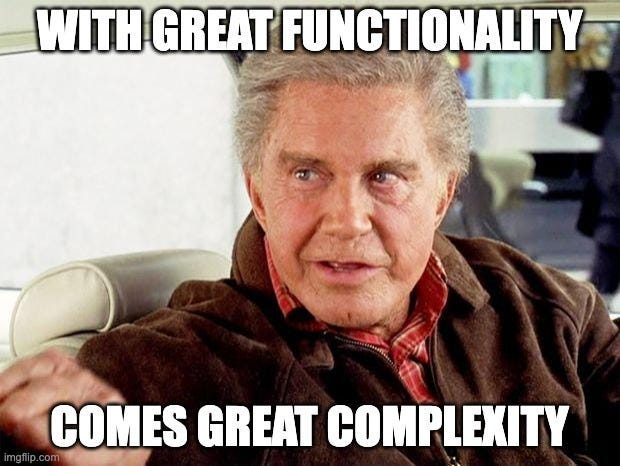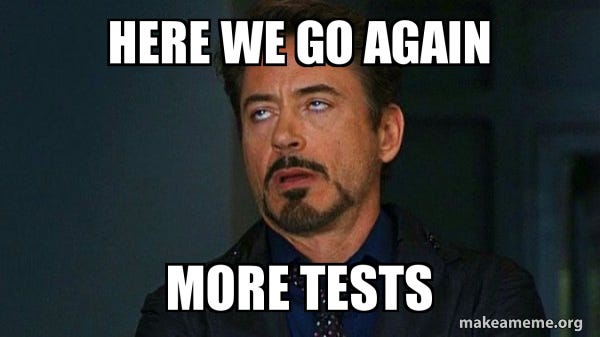Stakeholder driven decisions
When, why and how you need to make overruling leader-led decisions.
Almost a decade ago when a stakeholder overruled my decision, I was shaken.
My initial reaction was defensive. It’s micromanagement, I thought. Me and my team felt disempowered. How can we foster a proper product culture or rely on data when such decisions are imposed top-down upon us?
But the truth is sometimes those decisions are a blessing. At the time, I couldn’t see the bigger picture behind it.
Senior leaders occasionally have to make such calls. Some employees will push back; others will disagree but commit. There’s always a hint of conflict involved.
This article is a reflection on when, why and how leaders have to make overruling decisions. Most importantly, how to deliver them in such a way that minimizes the negative impact on team morale.
Today’s article
When and why. Three types of contexts where such decisions are applicable.
How to deliver. When you have the luxury of time and when you don’t.
📝 Word count: 1022 words
⏱️ Reading time: ~10 minutes
⏰ When and why
🚀 Early-stage business
It’s typical for early-stage businesses to be stakeholder-led.
Founders juggle multiple plates: managing operations, building products, coding.
Most of these decisions are based on assumptions.
Except for some market analysis and business modeling, you just don’t have the data.
A typical proportion at this stage is 70% assumptions and 30% data.
On top of that, you need to pivot if there’s no product-market fit.
That requires a massive turnaround.
Back in Bolt’s early days, I worked with a prominent Lithuanian Mobility-as-a-Service (MaaS) provider that pivoted from business-to-government (B2G) to B2B when they realized the constraints of the model (long tender decision-making cycles).
Alternatively, when my co-founder and I were building a parking mobility startup (back in the old days of 2013–2014), we quickly realized that crowdsourcing B2C wasn’t sustainable.
The only way to properly monetize it was B2B2C, integrating parking payments through provider systems and allowing end users to make transactions.
That means you have to rebuild or sometimes even scrap the whole product and reshuffle the teams.
If a leader goes by the playbook and over-analyzes every step, the company will just run out of funding.
💡 Stakeholder-driven decisions cut down the time and costs it takes to shift the company to the next stage.
🧅 Layers of complexity
Alternative scenario is a late-stage company with layers of complexity.
I’d never underestimate the gravity of the status quo.
People rarely question why a certain decision or a process is in place.
In many cases they are legacy inheritance from founder’s assumptions.
Those assumptions might have been perfectly reasonable years ago, but now create an actual bottleneck.
Products can be build on top of it, operating processess written, teams hired to execute.
How do you untie this knot?
By doing a research? or a running an AB-test?
Of course not. You’ll just add more complexity and slow the team down.
The only way to break through this local maxima is by mitigating existing bottlenecks or rebuilding the entire system from scratch.
That’s what my manager did a decade ago. I was just not mature enough to understand the bigger picture behind this decision.
🤯 Analysis paralysis
Back in 2018, I joined a team that was stuck in AB-test paralysis.
For a year, they had been trying to roll out a redesign of the new search listing.
The problem was that Android funnel metrics were neutral, but iOS purchase conversion dropped by ~2% without any clear explanation.
The result repeated itself for test after test. The team was stuck.
Surprisingly, except for minor UI improvements, nothing had changed. Logic and tech were the literally same.
Instead of looking at the bigger picture and the massive cumulative costs of this endeavor, I tried to appease the team and formulated a plan for further AB tests.
Wrong.
The deviation could have easily been a short-term dip novelty effect. Since the value proposition was intact, just rolling out this change would have done no harm. Even if metrics dropped on big radars, this would be temporary.
Additionally, it would have saved costs big time.
It is the stakeholder’s responsibility to help the team cut through the analysis paralysis.
Just roll it out.
📣 How to deliver such decisions
Leader-led decisions can be hard on the team.
These decisions often come across as “… do this because I said so.”
Such blunt communication can overshadow or negate the team’s existing efforts.
But it doesn’t have to be that way.
The key is providing as much context as you can and tactically addressing the detractors.
The quality of change management depends on how much time you’re willing to invest.
If you need to pull a short stunt, be ready to accept the consequences of some people being negatively affected.
🖼️ The ideal scenario
Follow four waves of communication, assuming you have the luxury of time.
First, meet with those most affected and explain the logic behind the decision.
Second, hold an All Hands meeting to discuss the context and reasoning, and answer tough questions.
Third, identify key detractors and address their concerns directly.
Fourth, send a written follow-up a month later.
🚨 When you don’t have the luxury of time
The book “Character Limit: How Elon Musk Destroyed Twitter” opens with the story of Twitter’s acquisition, told through the perspective of an unassuming data scientist.
Half of his colleagues were laid off without notice or explanation, eventually prompting him to quit and bursting out on Musk directly.
Not exactly a textbook example of change management - but a unique precedent in history for executing such a massive reorg in so little time.
All Hands and follow-up comms are all great, but in many cases you just don’t have the luxury of time.
What should you do?
Target key influencers or empower your direct reports with the necessary context.
Ideally they would scale the communication to their teams.
Unfortunately, not every one is great at change management and at some point it will break or be misinterpreted.
But it is a cost you’ll have to accept given limited time.









